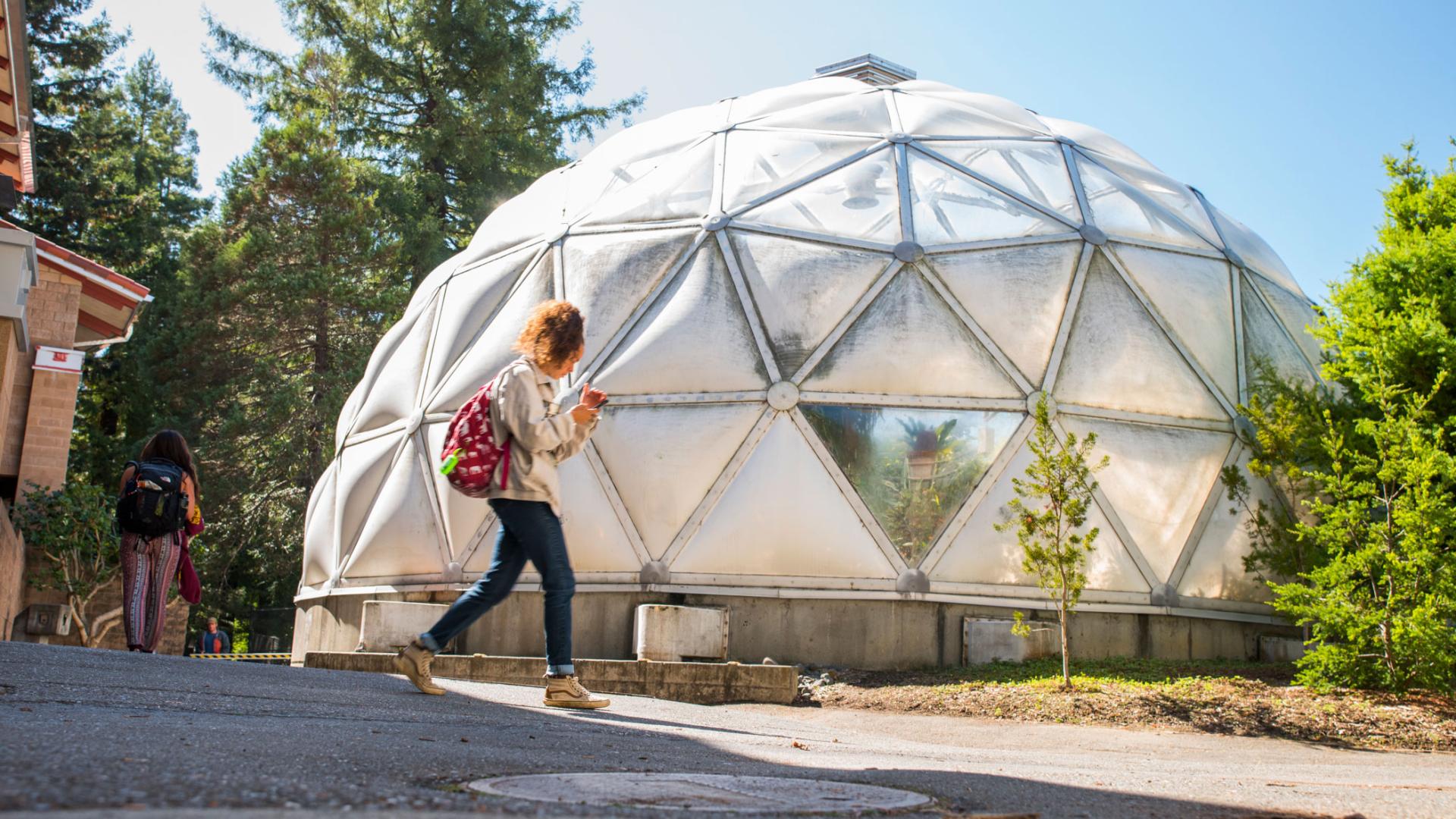Breadcrumb
Research Opportunities
Matthew Hurst
My research interests lie in two areas: (1) the development of analytical methods for the determination of trace metals in aquatic systems, and (2) the study of trace metal and nutrient cycling in natural systems with a particular interest in determining the toxicity and/or bioavailability of elemental species. Currently, the study sites used in my undergraduate research program include Humboldt Bay, Arcata Marsh, Smith River watershed, and California coastal waters.
Claire P. Till
My research focuses on measuring trace concentrations of metals in the marine environment and investigating how these trace metals impact or provide insights into biological, chemical and physical systems. Many trace metals are key micronutrients for phytoplankton; others (at sufficient concentration) are toxic; others are “tracers” that allow us to follow chemical and physical processes in the ocean.
Chris W. Harmon
My research interests are around heterogenous atmospheric chemistry. I’m interested in how small molecules adsorb to the surface of atmospheric aerosols and change their physical and chemical properties. Specifically, I am most interested in how volatile organic compounds (VOC) alter the ability of an aerosol to act as a cloud condensation nuclei (CCN) by forming an organic layer on the surface of an inorganic particle.
Jenny Cappuccio
Dr. Cappuccio is interested in how membrane and surface proteins interface on the nanoscale. The research encompasses the biochemical and biotechnology aspects of these two classes of proteins, focusing on understanding their interactions with lipids and other proteins. Student use nanotechnology tools to enable studies of GPCRs such as the CB2 receptor and other membrane proteins in lipid nanodiscs. New areas of research include investigations of novel cellulases in partership with CSUPERB and the Joint Genome Institute and applications of membrane proteins in stem cell biology.
Jeffrey B. Schineller
My research interests encompass enzymology and design of enzyme inhibitors, bioluminescence, proteomics and identification of biomarkers, interspecies signaling mechanisms, and bacterial secondary metabolites. Current work includes the identification of proteins that bind bacterial quorum sensing signals, the use of proteomics techniques to identify biomarkers for exposure to environmental toxins.
Kimberly N. White
Dr. White's research interests focus on the extraction of small molecules from natural sources to provide answers to key scientific questions. One project involves the isolation of bioactive natural products from terrestrial and marine Gram negative bacteria, followed by structure elucidation and biological testing. Pharmaceuticals are often derived from or inspired by naturally occurring chemical structures. Bacteria are a proven source of chemical diversity with useful biological properties.
Jenny Cappuccio
Dr. Cappuccio is interested in how membrane and surface proteins interface on the nanoscale. The research encompasses the biochemical and biotechnology aspects of these two classes of proteins, focusing on understanding their interactions with lipids and other proteins. Student use nanotechnology tools to enable studies of GPCRs such as the CB2 receptor and other membrane proteins in lipid nanodiscs. New areas of research include investigations of novel cellulases in partership with CSUPERB and the Joint Genome Institute and applications of membrane proteins in stem cell biology.
Matthew Hurst
My research interests lie in two areas: (1) the development of analytical methods for the determination of trace metals in aquatic systems, and (2) the study of trace metal and nutrient cycling in natural systems with a particular interest in determining the toxicity and/or bioavailability of elemental species. Currently, the study sites used in my undergraduate research program include Humboldt Bay, Arcata Marsh, Smith River watershed, and California coastal waters.
Claire P. Till
My research focuses on measuring trace concentrations of metals in the marine environment and investigating how these trace metals impact or provide insights into biological, chemical and physical systems. Many trace metals are key micronutrients for phytoplankton; others (at sufficient concentration) are toxic; others are “tracers” that allow us to follow chemical and physical processes in the ocean.
Jenny Cappuccio
Dr. Cappuccio is interested in how membrane and surface proteins interface on the nanoscale. The research encompasses the biochemical and biotechnology aspects of these two classes of proteins, focusing on understanding their interactions with lipids and other proteins. Student use nanotechnology tools to enable studies of GPCRs such as the CB2 receptor and other membrane proteins in lipid nanodiscs. New areas of research include investigations of novel cellulases in partership with CSUPERB and the Joint Genome Institute and applications of membrane proteins in stem cell biology.
Jorge Monteiro
Luminescence is used in cell imaging to unravel cellular processes, or in disease diagnosis. Some systems can be modified to add extra functionality, such as generating reactive oxygen species that are cytotoxic and can be used for treatment. Commonly used luminescent compounds such as organic dyes and nanoparticles have limitations from photobleaching, short emission lifetimes, excitation/emission bands outside of the biological window and cell damage due to high power excitation sources.
Matthew Hurst
My research interests lie in two areas: (1) the development of analytical methods for the determination of trace metals in aquatic systems, and (2) the study of trace metal and nutrient cycling in natural systems with a particular interest in determining the toxicity and/or bioavailability of elemental species. Currently, the study sites used in my undergraduate research program include Humboldt Bay, Arcata Marsh, Smith River watershed, and California coastal waters.
Claire P. Till
My research focuses on measuring trace concentrations of metals in the marine environment and investigating how these trace metals impact or provide insights into biological, chemical and physical systems. Many trace metals are key micronutrients for phytoplankton; others (at sufficient concentration) are toxic; others are “tracers” that allow us to follow chemical and physical processes in the ocean.
Joshua Smith
Organometallic Aryne Chemistry
Attempts are being made to synthesize, and, perhaps, directly observe small aryns (e.g., benzyne) bound to the metals facially. These complexes are expected to open new routes to a new class of substituted aromatic metal complexes by reactions with nucleophiles and to allow novel entries into the synthesis of new and interesting bicyclic ring systems after trapping with dienes in situ.
Molecular Electronics
Robert W. Zoellner
Our research interests primarily involve the theoretical and computational modeling of novel, "interesting" compounds using research-quality software packages such as Spartan and Gaussian. For our purpose, "interesting" can be anything from simple aromatic systems, such as pyrrole, to topologically fascinating knots and belts such as trefoil-knotted alkanes and cyclacenes, and to compounds never imagined before, such as our recently-published work on nitratoxycarbons.
Kimberly N. White
Dr. White's research interests focus on the extraction of small molecules from natural sources to provide answers to key scientific questions. One project involves the isolation of bioactive natural products from terrestrial and marine Gram negative bacteria, followed by structure elucidation and biological testing. Pharmaceuticals are often derived from or inspired by naturally occurring chemical structures. Bacteria are a proven source of chemical diversity with useful biological properties.
Jorge Monteiro
Luminescence is used in cell imaging to unravel cellular processes, or in disease diagnosis. Some systems can be modified to add extra functionality, such as generating reactive oxygen species that are cytotoxic and can be used for treatment. Commonly used luminescent compounds such as organic dyes and nanoparticles have limitations from photobleaching, short emission lifetimes, excitation/emission bands outside of the biological window and cell damage due to high power excitation sources.
Joshua Smith
Organometallic Aryne Chemistry
Attempts are being made to synthesize, and, perhaps, directly observe small aryns (e.g., benzyne) bound to the metals facially. These complexes are expected to open new routes to a new class of substituted aromatic metal complexes by reactions with nucleophiles and to allow novel entries into the synthesis of new and interesting bicyclic ring systems after trapping with dienes in situ.
Molecular Electronics
Jenny Cappuccio
Dr. Cappuccio is interested in how membrane and surface proteins interface on the nanoscale. The research encompasses the biochemical and biotechnology aspects of these two classes of proteins, focusing on understanding their interactions with lipids and other proteins. Student use nanotechnology tools to enable studies of GPCRs such as the CB2 receptor and other membrane proteins in lipid nanodiscs. New areas of research include investigations of novel cellulases in partership with CSUPERB and the Joint Genome Institute and applications of membrane proteins in stem cell biology.
Jorge Monteiro
Luminescence is used in cell imaging to unravel cellular processes, or in disease diagnosis. Some systems can be modified to add extra functionality, such as generating reactive oxygen species that are cytotoxic and can be used for treatment. Commonly used luminescent compounds such as organic dyes and nanoparticles have limitations from photobleaching, short emission lifetimes, excitation/emission bands outside of the biological window and cell damage due to high power excitation sources.
Kjirsten A. Wayman
My research focuses on plant secondary compounds to study chemotaxonomy and hybridization among related plant species. A current project uses gas chromatography – mass spectrometry to characterize the floral scent composition of western North American Trillium species. The composition of floral volatiles in Trillium is used to gain insight into their taxonomic relationships, hybridization, and pollination biology. Long-term studies of floral volatiles from select populations of Trilllium may also allow us to see how the plants respond to a changing climate and its effects.
Kimberly N. White
Dr. White's research interests focus on the extraction of small molecules from natural sources to provide answers to key scientific questions. One project involves the isolation of bioactive natural products from terrestrial and marine Gram negative bacteria, followed by structure elucidation and biological testing. Pharmaceuticals are often derived from or inspired by naturally occurring chemical structures. Bacteria are a proven source of chemical diversity with useful biological properties.
Jeffrey B. Schineller
My research interests encompass enzymology and design of enzyme inhibitors, bioluminescence, proteomics and identification of biomarkers, interspecies signaling mechanisms, and bacterial secondary metabolites. Current work includes the identification of proteins that bind bacterial quorum sensing signals, the use of proteomics techniques to identify biomarkers for exposure to environmental toxins.
Joshua Smith
Organometallic Aryne Chemistry
Attempts are being made to synthesize, and, perhaps, directly observe small aryns (e.g., benzyne) bound to the metals facially. These complexes are expected to open new routes to a new class of substituted aromatic metal complexes by reactions with nucleophiles and to allow novel entries into the synthesis of new and interesting bicyclic ring systems after trapping with dienes in situ.
Molecular Electronics
Kjirsten A. Wayman
My research focuses on plant secondary compounds to study chemotaxonomy and hybridization among related plant species. A current project uses gas chromatography – mass spectrometry to characterize the floral scent composition of western North American Trillium species. The composition of floral volatiles in Trillium is used to gain insight into their taxonomic relationships, hybridization, and pollination biology. Long-term studies of floral volatiles from select populations of Trilllium may also allow us to see how the plants respond to a changing climate and its effects.
Kimberly N. White
Dr. White's research interests focus on the extraction of small molecules from natural sources to provide answers to key scientific questions. One project involves the isolation of bioactive natural products from terrestrial and marine Gram negative bacteria, followed by structure elucidation and biological testing. Pharmaceuticals are often derived from or inspired by naturally occurring chemical structures. Bacteria are a proven source of chemical diversity with useful biological properties.
Joshua Smith
Organometallic Aryne Chemistry
Attempts are being made to synthesize, and, perhaps, directly observe small aryns (e.g., benzyne) bound to the metals facially. These complexes are expected to open new routes to a new class of substituted aromatic metal complexes by reactions with nucleophiles and to allow novel entries into the synthesis of new and interesting bicyclic ring systems after trapping with dienes in situ.
Molecular Electronics
Jorge Monteiro
Luminescence is used in cell imaging to unravel cellular processes, or in disease diagnosis. Some systems can be modified to add extra functionality, such as generating reactive oxygen species that are cytotoxic and can be used for treatment. Commonly used luminescent compounds such as organic dyes and nanoparticles have limitations from photobleaching, short emission lifetimes, excitation/emission bands outside of the biological window and cell damage due to high power excitation sources.
Joshua Smith
Organometallic Aryne Chemistry
Attempts are being made to synthesize, and, perhaps, directly observe small aryns (e.g., benzyne) bound to the metals facially. These complexes are expected to open new routes to a new class of substituted aromatic metal complexes by reactions with nucleophiles and to allow novel entries into the synthesis of new and interesting bicyclic ring systems after trapping with dienes in situ.
Molecular Electronics
Chris W. Harmon
My research interests are around heterogenous atmospheric chemistry. I’m interested in how small molecules adsorb to the surface of atmospheric aerosols and change their physical and chemical properties. Specifically, I am most interested in how volatile organic compounds (VOC) alter the ability of an aerosol to act as a cloud condensation nuclei (CCN) by forming an organic layer on the surface of an inorganic particle.
Kjirsten A. Wayman
My research focuses on plant secondary compounds to study chemotaxonomy and hybridization among related plant species. A current project uses gas chromatography – mass spectrometry to characterize the floral scent composition of western North American Trillium species. The composition of floral volatiles in Trillium is used to gain insight into their taxonomic relationships, hybridization, and pollination biology. Long-term studies of floral volatiles from select populations of Trilllium may also allow us to see how the plants respond to a changing climate and its effects.
Jeffrey B. Schineller
My research interests encompass enzymology and design of enzyme inhibitors, bioluminescence, proteomics and identification of biomarkers, interspecies signaling mechanisms, and bacterial secondary metabolites. Current work includes the identification of proteins that bind bacterial quorum sensing signals, the use of proteomics techniques to identify biomarkers for exposure to environmental toxins.
Matthew Hurst
My research interests lie in two areas: (1) the development of analytical methods for the determination of trace metals in aquatic systems, and (2) the study of trace metal and nutrient cycling in natural systems with a particular interest in determining the toxicity and/or bioavailability of elemental species. Currently, the study sites used in my undergraduate research program include Humboldt Bay, Arcata Marsh, Smith River watershed, and California coastal waters.





